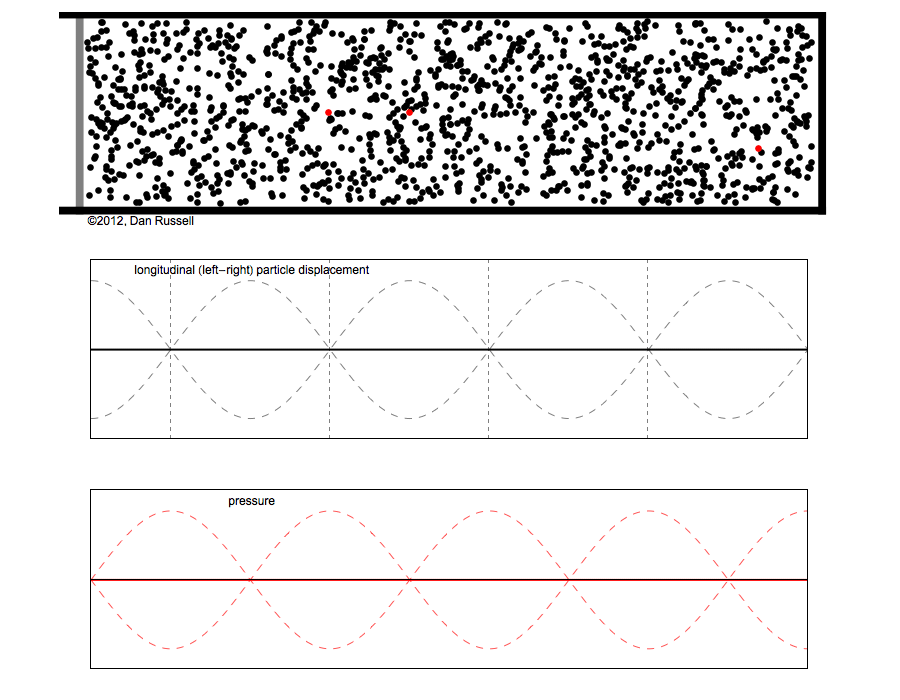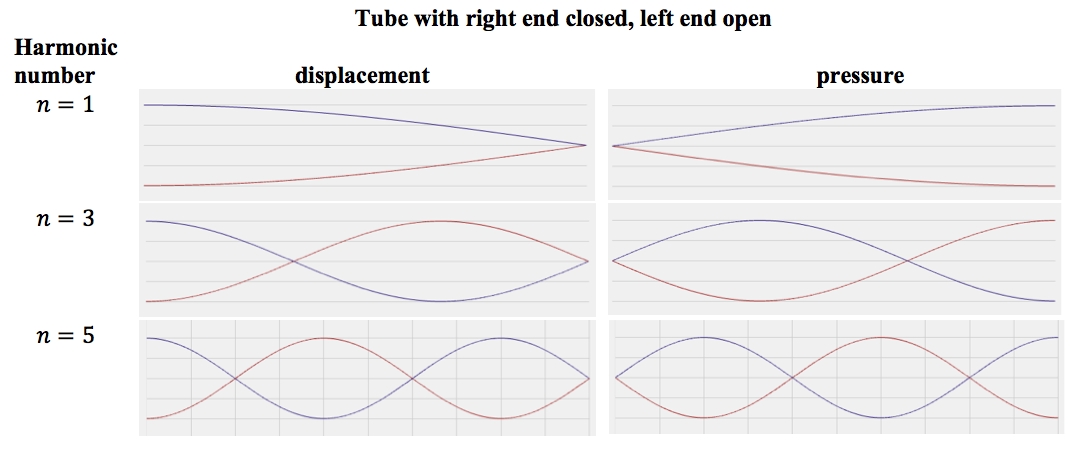THEORETICAL INTRODUCTION
1.0 Speed of Sound in Everyday Life
In everyday life, knowledge of the speed of sound in air and how it propagates is implicit
in different objects and basic ideas:
- There is a time-difference of less than a millisecond between sounds reaching our
left and right ear depending from where the sound comes;
- In wind instruments, the speed of sound and the length of the pipe determines the
pitch of the sound;
- Supersonic airplanes (flying faster than the speed of sound) can break the sound barrier,
thus the sound source will pass by a stationary observer before the observer actually
hears the sound it creates.
1.1 Sound
Sound travels as a longitudinal wave (particles move parallel to the direction in which the wave
is travelling) through a medium (does not exist in the vacuum) with a certain speed.
In the study of sound, two important properties must be considered: a sound wave consist
of alternating compressions (high pressure) and rarefactions (low pressure) and the individual
particles of the medium do not travel with the wave, but only vibrate back and forth centred
on its equilibrium position.
Therefore the speed of sound in a medium depends on how quickly vibrational energy is transferred. In
general, the equation for the speed of a mechanical wave (what the sound is) in a medium is expressed as:
v=elastic propertyinertial property .
In an ideal gas the equation for the speed of sound is with for air.
As we can see the speed does not depend on the pressure at a constant temperature.
To find the speed of sound in air, it’s possible to take different theoretical approaches to the problem. Thus, in this work, three different methods were used: resonance tube, two microphones and echo.
1.1 Resonance Tube
When a sound wave travels down a tube with one open and one close end, it can reflect, interfering with
itself to produce a standing wave (combination of two waves moving in opposite directions, each having
the same amplitude and frequency).
The standing wave pattern is characterised by points in the tube where the displacement of the air
molecules is always zero (called nodes) and points where the displacement is at a maximum (called antinodes).
Because sound waves are longitudinal waves, the particle motion associated with a standing
sound wave is directed along the length of the pipe. This can be best represented in an animation.
 https://en.wikipedia.org/wiki/Standing_wave#/media/File:Standing.gif
The leftmost red particle does not move at all, so it is located at a displacement node. The particles to the
right and left of this stationary node first move toward the node, they become closer together and the
local particle density increases (pressure compression). As the particles move away from the node the
local particle density decreases (pressure rarefaction). Therefore, the pressure antinodes
(regions where air pressure has the biggest variations) coincide with the displacement nodes.
The second red particle moves with maximum displacement, so it is located at a displacement antinode.
The local particle density in this region does not change as the particles move back and forth. The pressure
nodes (regions where there are no air pressure variations) coincide with the displacement antinodes.
https://en.wikipedia.org/wiki/Standing_wave#/media/File:Standing.gif
The leftmost red particle does not move at all, so it is located at a displacement node. The particles to the
right and left of this stationary node first move toward the node, they become closer together and the
local particle density increases (pressure compression). As the particles move away from the node the
local particle density decreases (pressure rarefaction). Therefore, the pressure antinodes
(regions where air pressure has the biggest variations) coincide with the displacement nodes.
The second red particle moves with maximum displacement, so it is located at a displacement antinode.
The local particle density in this region does not change as the particles move back and forth. The pressure
nodes (regions where there are no air pressure variations) coincide with the displacement antinodes.
 https://www.compadre.org/osp/EJSS/4492/277.htm
In a tube with one open and one close end, the closed end acts as a displacement node because the air
molecules cannot move beyond the rigid end and the open end acts as a displacement antinode since the
air can move freely.
https://www.compadre.org/osp/EJSS/4492/277.htm
In a tube with one open and one close end, the closed end acts as a displacement node because the air
molecules cannot move beyond the rigid end and the open end acts as a displacement antinode since the
air can move freely.
To achieve this pattern, it is necessary to use a particular frequency, called harmonic frequency, which
can be found, using:
Where
is the harmonic frequency, n is an odd integer, v is the speed of sound and l is the length of the tube.
The factor 4 is used because the wave must travel the length of the tube twice and undergo a half-wavelength
phase shift upon reflection at the closed end, and then travel the length of the tube again and undergo another
half-wavelength phase shift upon exiting the open end.
The positions of the nodes inside the tube correspond to:
 https://en.wikipedia.org/wiki/Standing_wave#/media/File:Standing.gif
https://en.wikipedia.org/wiki/Standing_wave#/media/File:Standing.gif
The leftmost red particle does not move at all, so it is located at a displacement node. The particles to the
right and left of this stationary node first move toward the node, they become closer together and the
local particle density increases (pressure compression). As the particles move away from the node the
local particle density decreases (pressure rarefaction). Therefore, the pressure antinodes
(regions where air pressure has the biggest variations) coincide with the displacement nodes.
The second red particle moves with maximum displacement, so it is located at a displacement antinode.
The local particle density in this region does not change as the particles move back and forth. The pressure
nodes (regions where there are no air pressure variations) coincide with the displacement antinodes.
 https://www.compadre.org/osp/EJSS/4492/277.htm
https://www.compadre.org/osp/EJSS/4492/277.htm
In a tube with one open and one close end, the closed end acts as a displacement node because the air
molecules cannot move beyond the rigid end and the open end acts as a displacement antinode since the
air can move freely.